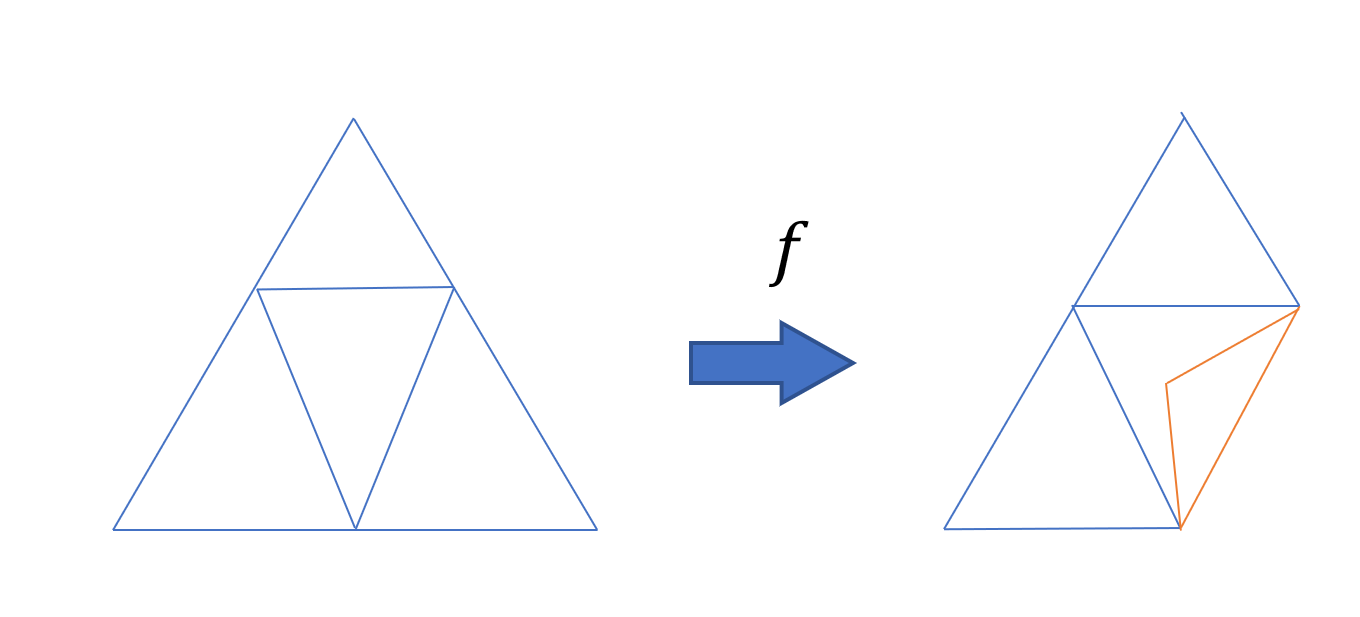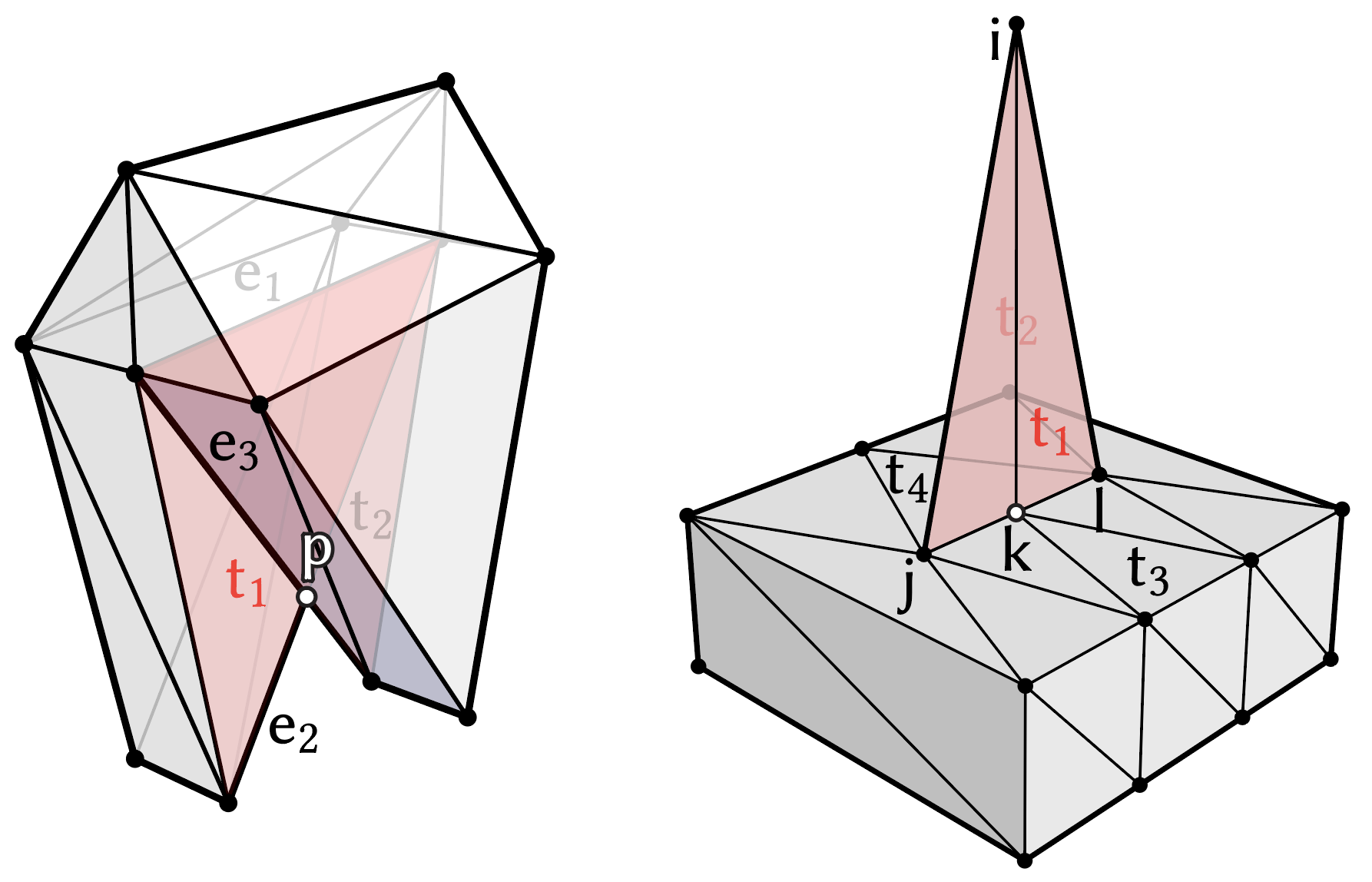Sorry, my previous answer is based on the impression that the "manifold" can mean "manifold with boundary. In that case, the countercase can be constructed easily (see my previous answer).
But for true manifold, here is my answer:
Question 1: Yes, except the simplicial 1-manifold embedded to 2/3D. But I think this case can always be viewed as a slicing of the 2 manifolds.
Question 2: I actually believe this is true. I even drafted a proof:
First let's filter out all the degenerate cases.
There are 3 degenerate cases, as shown in the following figure. (a,b) correspond's to the rank of $\nabla f$ being 1; (c) corresponds to the rank of $\nabla f$ being 0. Both violate the almost-embedding definition (a: green vertex and the bottom edge; b: green vertex and the red vertex; c: all three ).
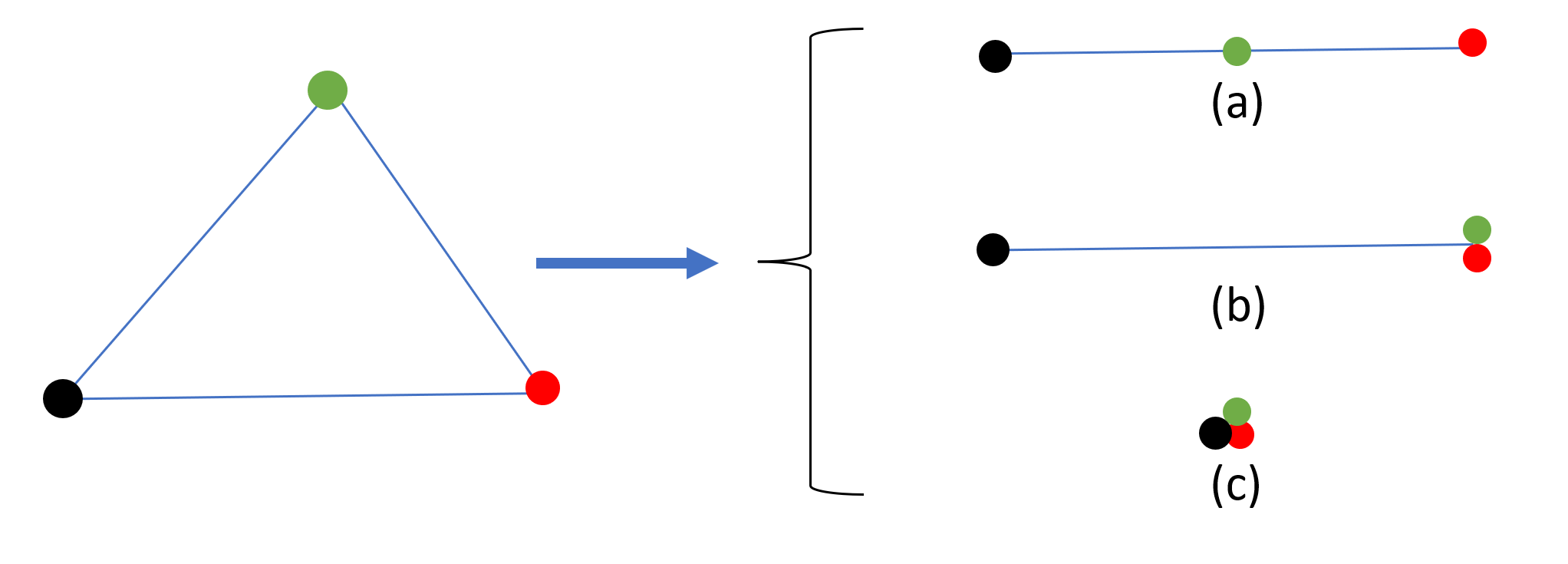
Then we can actually check whether there can be a local intersection that satisfies the almost-embedding definition. We only need to find 2 2-simplex (triangle): $t_1$ and $t_2$ from the embedding of the manifold, s.t., $t_1 \cap t_2\neq \emptyset$, and an emersion $f$, s.t., $f(t_1/(t_1\cap t_2))\cap f(t_2/(t_1\cap t_2))\neq\emptyset$, and $f$ is causing no intersection of non-adjacent faces.
$t_1 \cap t_2\neq \emptyset$ includes two cases: they can share 1 or 2 vertices (but not 3). as shown in the following figure. We can break it down to different cases and prove they all violate the definition of almost embedding.
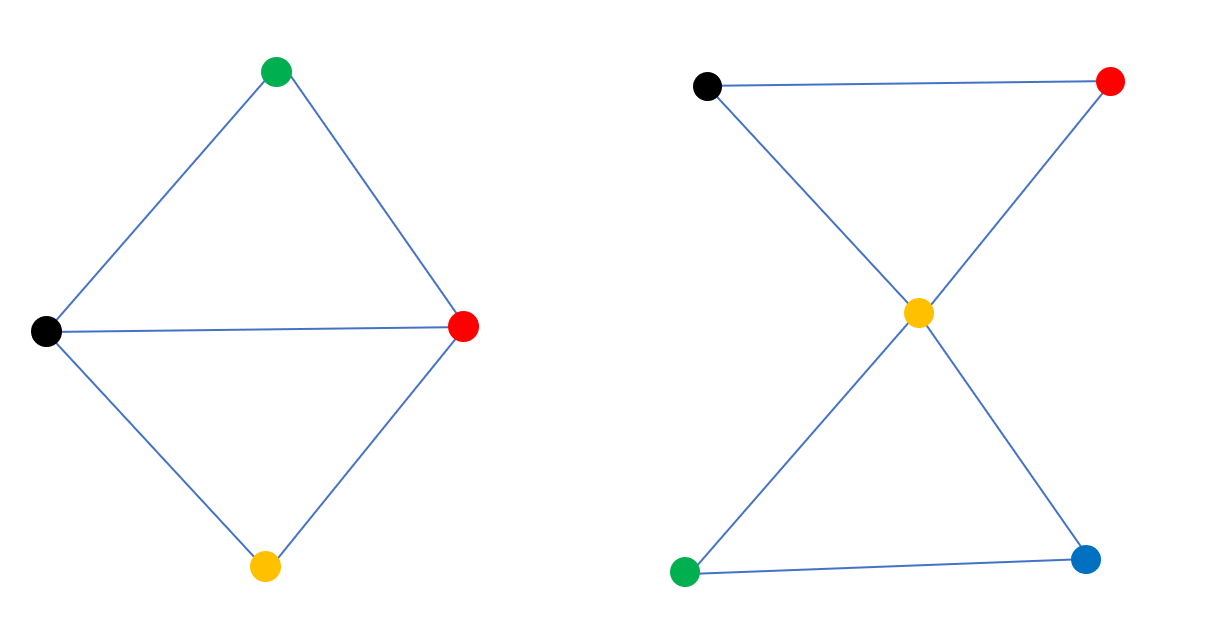
If $t_1 $ and $ t_2$ shares 2 vertices and $f(t_1/(t_1\cap t_2))\cap f(t_2/(t_1\cap t_2))\neq\emptyset$, $f(t_1)$ and $f(t_2)$ must be coplanar, then we can just enumerate all the intersection cases of $f(t_1)$ and $f(t_2)$, there are totally 4 cases (mode out the symmetry). All of them are not almost embedding, violating parts are marked by the red cross.
 We can guarantee this is an exhaustive list, because there are local intersections if an only if the yellow vertex is mapped to one of the regions 1,2,3,4 (or the boundary between them) in the following figure. Algebraic analysis can prove the intersection condition and the categorization of the cases.
We can guarantee this is an exhaustive list, because there are local intersections if an only if the yellow vertex is mapped to one of the regions 1,2,3,4 (or the boundary between them) in the following figure. Algebraic analysis can prove the intersection condition and the categorization of the cases.
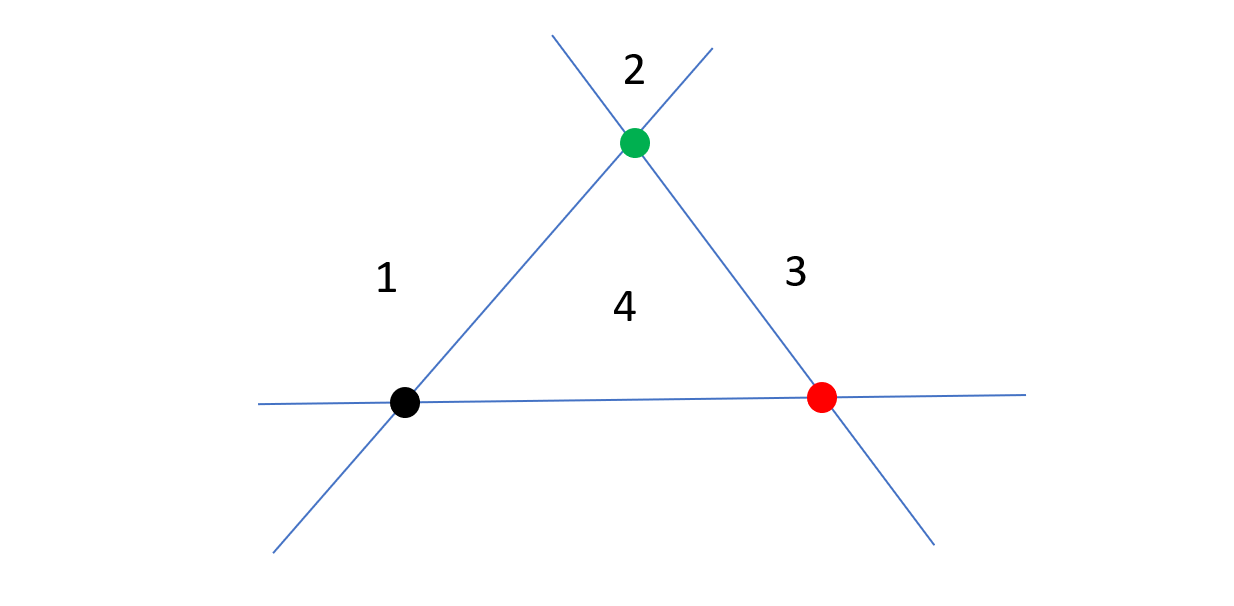
Case 2: $t_1$ and $t_2$ only share one vertex. In this case if $f(t_1/(t_1\cap t_2))\cap f(t_2/(t_1\cap t_2))\neq\emptyset$ we can further categorize it into 2 subcases:
5.1. Edge intersections: when $f(e_1)^\circ \cap f(e_2)^\circ \neq \emptyset$. where $e_1, e_2$ are edges, $e_1 \in t_1$ and $e_2 \in t_2$ and $e_1 \cap e_2=$shared vertex. There are 3 cases, as shown in the figure. None of them are almost embedding.

5.2. $f(t_1)^\circ \cap f(e_2)^\circ \neq \emptyset$, where $e_2 \in t_2$ and contains the shared vertex. There are 3 cases, and non of them are almost embedding.

5.3. Every case that is neither 5.1 nor 5.2. Then e mush $f(t_1)^\circ \cap f(t_2)^\circ \neq \emptyset$. This is a very intersting case, actually, it can be handled similarly to 5.1. Denote $e_1$, $e_2$ as the edge of $t_1$ and $t_2$ opposite to the shared vertex. In this case, eigher $f(e_1) \cap f(t_2)^\circ \neq \emptyset$, or $f(e_2) \cap f(t_1)^\circ \neq \emptyset$, or or $f(e_1) \cap f(e_2) \neq \emptyset$. Either way, it's not an almost embedding.

We've proved that in every possible case, the local intersection cannot be an almost embedding. Thus question 2 is proven.
Below are my old answers.
Have you considered the simplicial 3-manifold cases?
For Question 1:
I think an almost-embedding can also be a 3D simplicial complex (tetrahedral mesh) mapped to $\mathcal{R}^3$ (for example, an identity map).
For Question 2:
You might have degenerate cases or flipped cases, like this $\mathcal{R}^2 \mapsto \mathcal{R}^2 \times \{0\}$ case shown in the figure. Because the bijectivity of already adjacent simplexes is not controlled by the definition. (the website won't let me directly post images)
